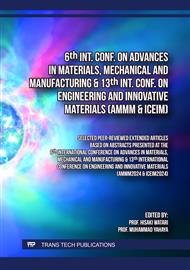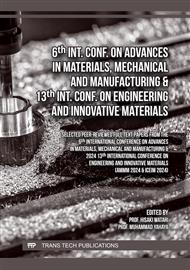p.29
p.37
p.43
p.49
p.57
p.67
p.73
p.79
p.85
Exhaust Emission Analysis of Spark Ignition Engine with Modification of Exhaust Gas Recirculation (EGR), Air Intake Tank, and Swirl Generator
Abstract:
Many engine development is done to achieve better engine performance, exhaust gas emissions, and engine combustion characteristics to fulfil strict regulation requirements. However, known modifications require a high cost of development. This study focuses on implementing cost-effective modification, which is the installation of Exhaust Gas Recirculation (EGR). There were three stages of the modifications made: the installation of the EGR component, air intake tank, swirls generator, and the combination of the three modifications. EGR aims to reduce harmful emissions by recirculating the exhaust gas in the catalyser into the intake manifold in a smaller quantity. The air intake tank system was installed to reduce the air intake pressure and act as a warm air reservoir collected by repositioning a high-performance air filter in front of the radiator. Lastly, a swirl generator was mounted at the air intake manifold to better blend the air-to-fuel mixture. Each modification, including the combination of all modifications, was compared with baseline emissions data, which are carbon dioxide (CO2), carbon monoxide (CO), and nitrogen oxides (NOx). Despite the increment of the CO of as much as 42.5%, the CO2 increased by as much as 16.3% because the combustion is near the stoichiometric combustion. The NOx can only be reduced by installing the air intake tank upstream of the intake system. The experimental result can be concluded that all the modifications implemented on the engine had made combustion towards the complete combustion process, which has lower CO and increased CO2.
Info:
Periodical:
Pages:
57-63
Citation:
Online since:
August 2025
Authors:
Price:
Сopyright:
© 2025 Trans Tech Publications Ltd. All Rights Reserved
Share:
Citation:



